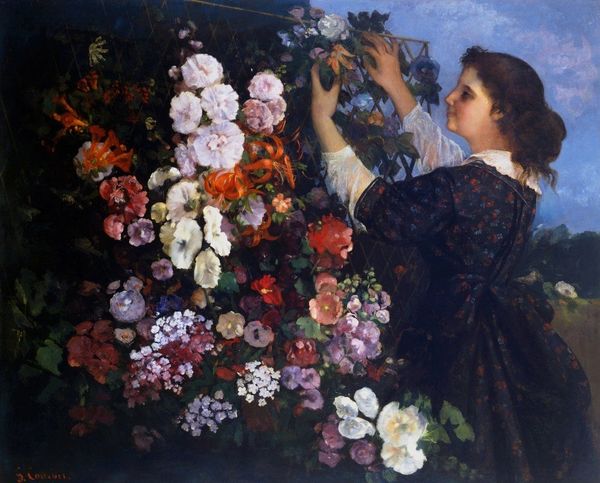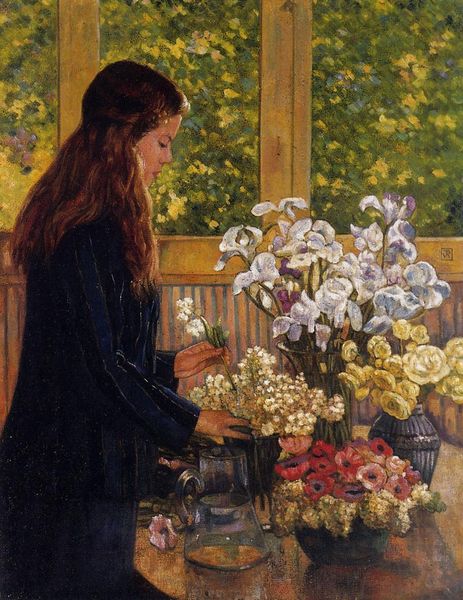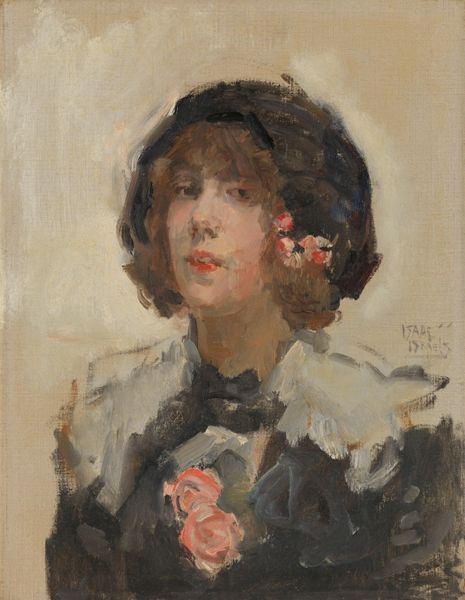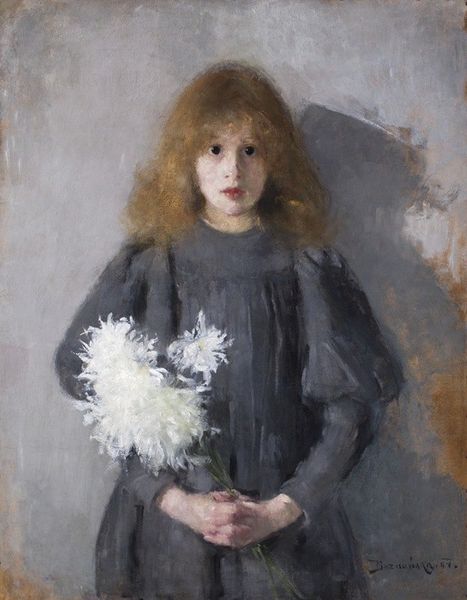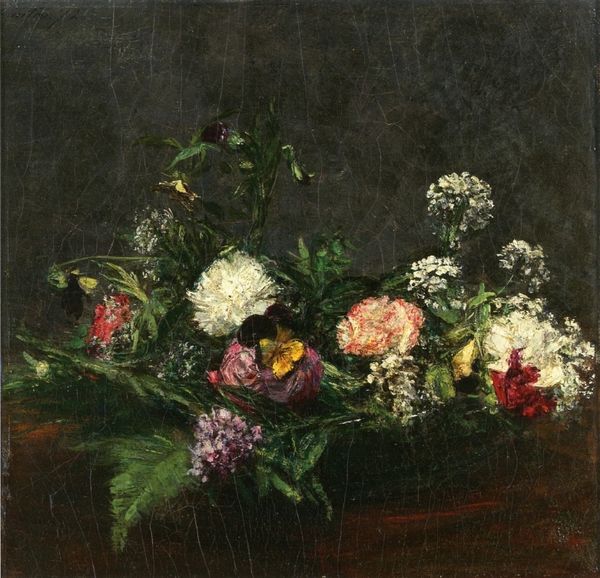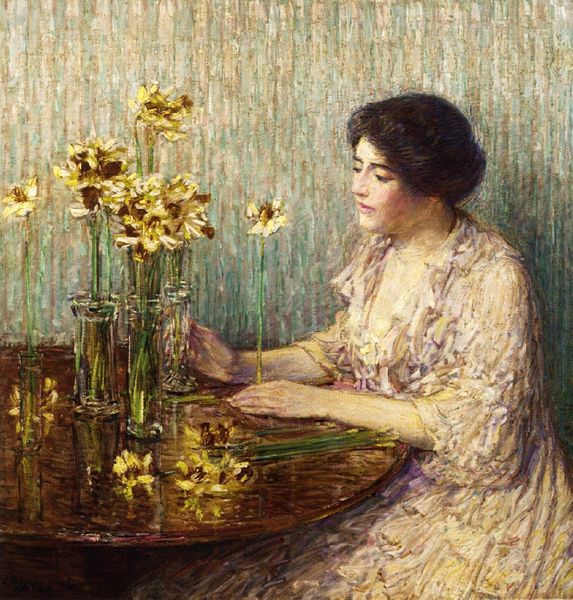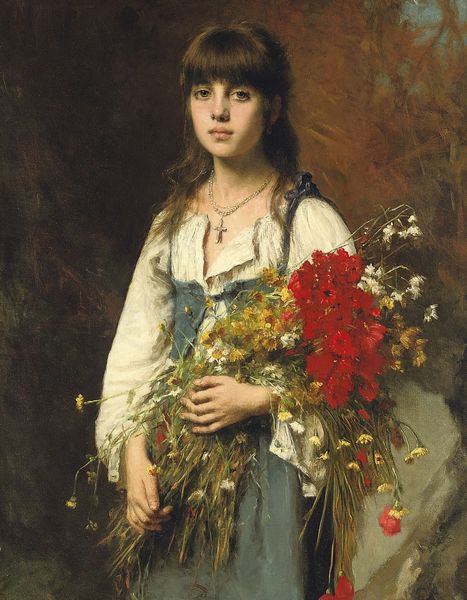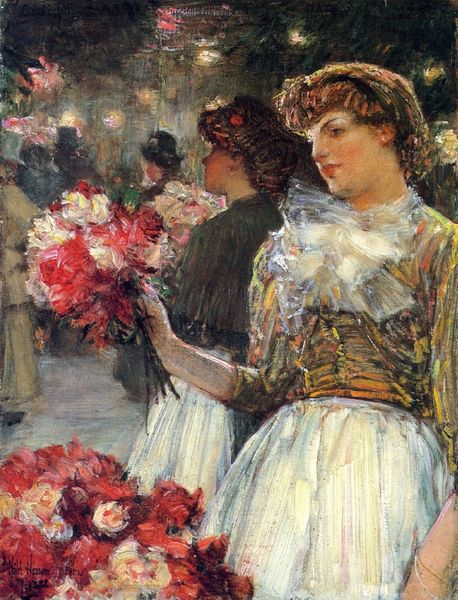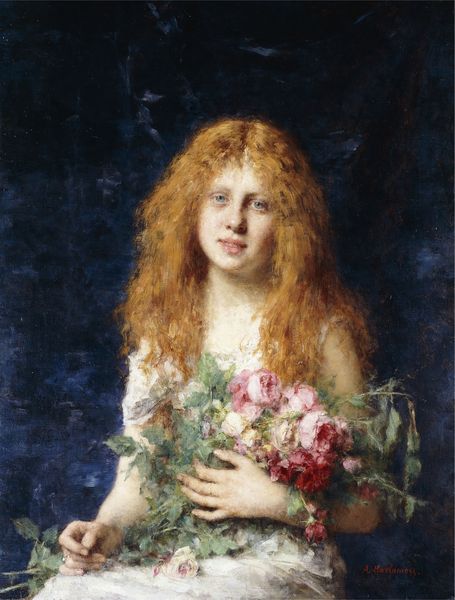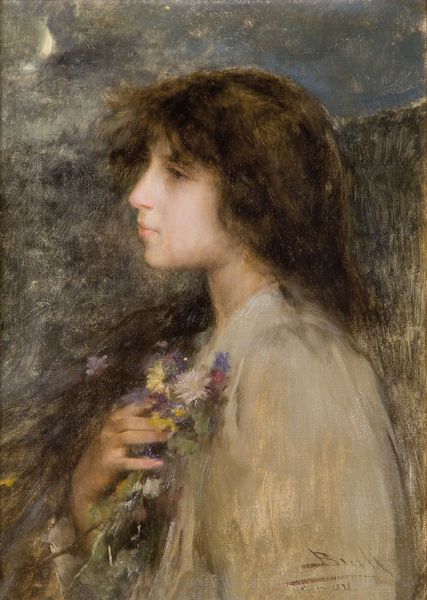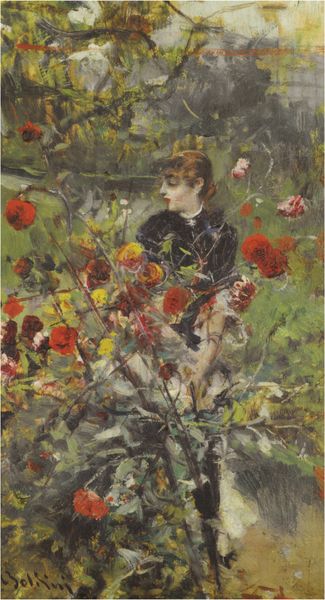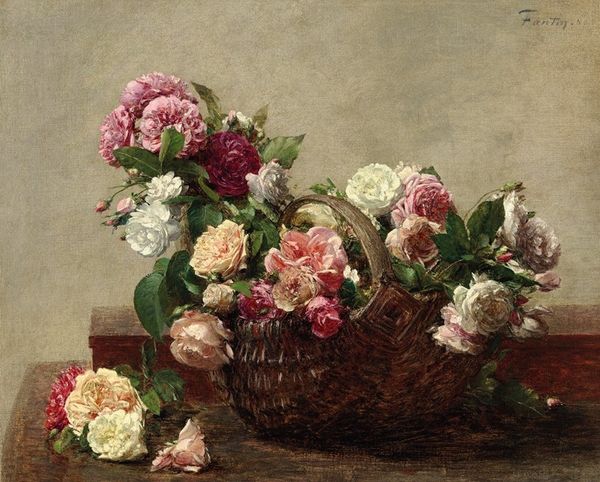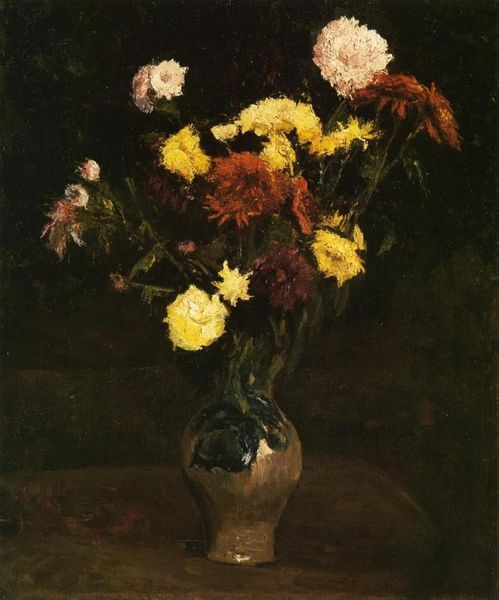
painting, oil-paint
#
portrait
#
still-life
#
gouache
#
painting
#
oil-paint
#
oil painting
#
genre-painting
#
realism
Copyright: Public domain
Curator: Here we have "The Flower Seller" by Charles Hermans, a painting in oil on canvas. The date of its creation, however, remains unknown to us. Editor: The overall tone feels somber, almost melancholic. It's a still-life infused with a portrait, but somehow it departs from traditional celebration and enters a pensive domain. The bouquet dominates everything. Curator: Yes, look closely and consider the societal role of flower sellers, typically working-class women, often migrants or from marginalized communities. Hermans, known for his social realism, may be critiquing the exploitation inherent in such labor. We have to remember class was deeply gendered in the late nineteenth century. Editor: I appreciate your perspective. But can we also consider the arrangement of the flowers, and Hermans' use of color theory, particularly in creating texture. Look at the rough surface around her profile; he appears less interested in depicting her as an individual and more focused on a kind of artful balance in the painting. Curator: But even the imbalance serves the narrative. Is the artist consciously commenting on the fact that so much weighs upon this anonymous woman’s shoulders? That's what it feels like she’s carrying—a lot more than roses. The burden is visible. It affects everything! Editor: I concede to your point that this may signify additional pressures upon the subject. But look at the flowers and the woman; she appears secondary. She has been intentionally painted to blend in with the background—all browns and olives, in contrast to the vivacious hues of the roses and violets and other blossoms. Curator: Perhaps, yet blending with the background isn’t simply an act of compositional arrangement—rather, to have no distinction as a person is a privilege for the few. Let us observe from which perspective she has been painted: a muted being blending into the drab colors surrounding the true focal point: Her wares, not her story. Editor: Regardless of our differences in interpretation, there is certainly room for a great many more discussions about this wonderful oil on canvas. Curator: Exactly! It invites so many critical discussions about visibility, labour, and representation.
Comments
No comments
Be the first to comment and join the conversation on the ultimate creative platform.
